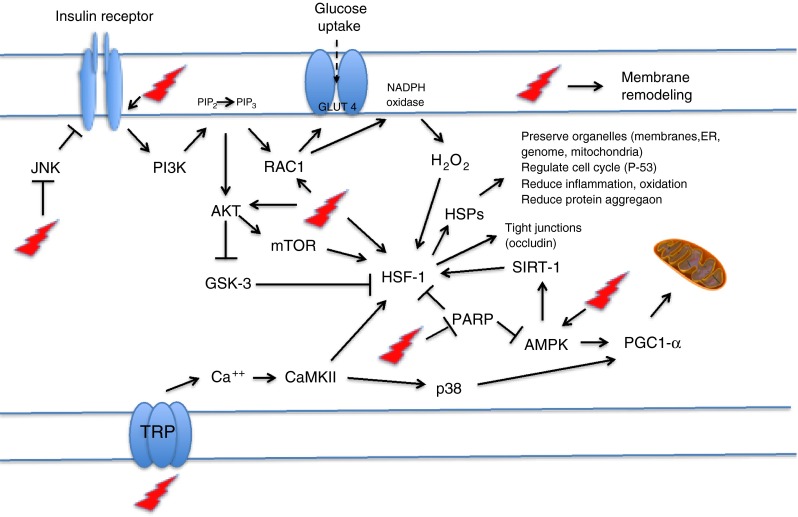Fig. 2.

Exercise, heat shock, and the multitarget, membrane-interacting HSP inducers (like hydroximic acid derivatives) can activate many of the same metabolic pathways. These activators increase insulin receptor auto-phosphorylation, block JNK’s inhibitory phosphorylation of insulin receptor, increase Akt phosphorylation, activate mTOR, activate ras-related C3 botulinum toxin substrate 1 (RAC1), increase GLUT4 translocation and increase glucose uptake, increase second messenger H2O2, remodel membranes, increase AMPK, decrease HSF-1 acetylation, deactivates glycogen synthase kinase (GSK) inhibition of HSF-1, increase activation of HSF-1, inhibit poly ADP ribose polymerase (PARP), increase mitochondrial biogenesis and function, increase HSPs that restores stress resilience and organ survival—beta-cell, heart, liver kidney, retina, skin, etc., increase occludin expression and tight junction barrier function, activate the heat sensor transient receptor potential (TRP) that releases calcium as a second messenger to ultimately activate HSF1 and PGC1-α to increase mitochondrial function and synthesis (Dokladny et al. 2008; Crul et al. 2013; Török et al. 2013)
